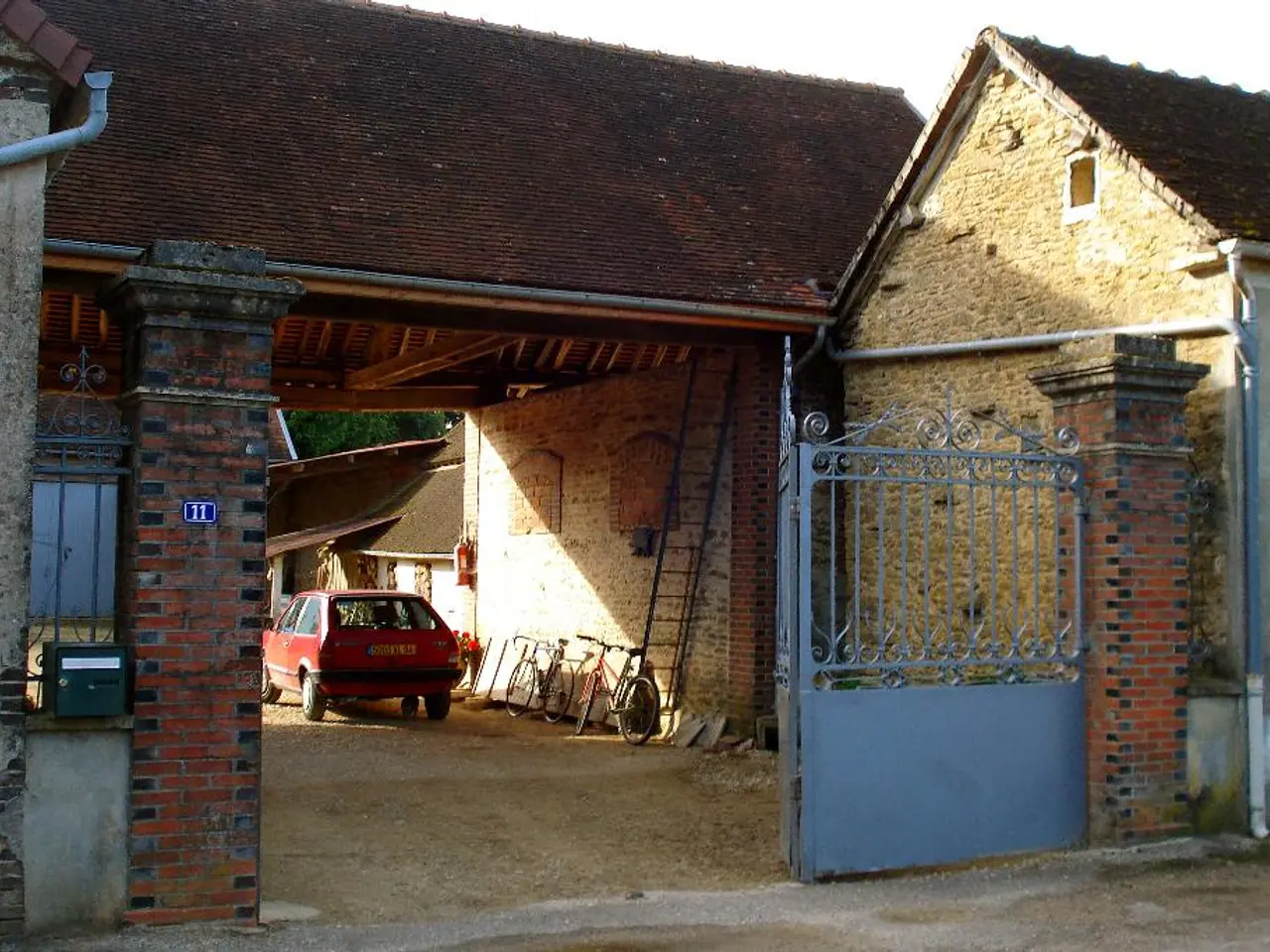Leader Kelly Delaney on the Importance of Regulations for Efficient Energy Financing
Got curious about what's being done to reduce the carbon footprint of our built environment? Let's dive into California's innovative approach to financing energy efficiency retrofits, a program that makes green homes a reality for all Californians.
Saving the Planet, One Energy-Efficient Home at a Time
It's no secret that the built environment is a major contributor to greenhouse gas emissions. With approximately 40% of emissions coming from buildings, we need to act fast to keep our planet habitable for future generations. That's where initiatives like California's GoGreen Home financing program come in.
From Idea to Action: Financing Energy Efficiency for All
Kelly Delaney, a former Young Leader, is at the helm of this groundbreaking program. The program, supported by the California Alternative Energy and Advanced Transportation Financing Authority (CAEATFA), aims to make energy efficiency financing more accessible for residential, commercial, and affordable multifamily properties.
“My program facilitates energy efficiency financing for the residential, commercial, and affordable multifamily sector,” Kelly states. In 2019, the California Energy Commission reported that energy savings were “about 20 percent short of the 2030 goal.” With the GoGreen Home financing program, Kelly is helping California reach and surpass those goals.
Regulating for a Greener Tomorrow
After working in regulatory software for local and state governments for a few years, Kelly found herself drawn to programs that serve the public good more directly. Now, as an Energy Efficiency Financing Specialist, she supports the strategic development and growth of her program, which involves drafting regulations and guiding them through the approval process.
These regulations are essential, as they set the standards for project eligibility, data collection, and quality assurance, ensuring that projects and loans are in line with the program's mission. Additionally, Kelly works with contractors to offer more than 60 eligible energy efficiency measures, ranging from building envelope renovations to energy-efficient appliances and equipment.
Overcoming Barriers: Innovative Solutions to Ancient Challenges
After six years, the program moved out of the pilot stage and is still evolving. Kelly, who has been a part of the team for two years, plays an instrumental role in shaping the program's design and implementation, particularly in the residential and multifamily sectors.
Addressing High Up-Front Costs
One of the primary barriers to energy efficiency retrofits is the high upfront costs associated with improvements like new heating systems or insulation. The GoGreen Home financing program helps break down these financial barriers by offering financing options that allow customers to pay off their projects over time.
Securing Lender Investments
To incentivize private lenders to invest in energy-efficient projects, the program uses a loan insurance fund. This fund cushions lenders' risk, ensuring that more people can access affordable energy efficiency financing.
Supporting Underserved Communities
Kelly and the GoGreen Home financing team are committed to making energy efficiency financing accessible to all Californians, particularly underserved communities that may have previously struggled to secure loans. For each loan record submitted to the program, CAEATFA contributes a portion of its funds to a loss reserve for the lender.
The Power of Partnerships: Public-Private Collaboration in Action
To take accessibility to the next level, GoGreen Home partnered with a lender and an online marketplace operator to launch point-of-sale financing online. This innovation is the first state energy financing program in the USA to offer financing at the digital checkout, and it's been a hit with Californians looking to go green.
Charting Success: The Road to a Greener Future
California's GoGreen Home program is driving regulatory and programmatic change in the energy efficiency sector, revolutionizing how we finance energy-efficient homes. The program's 2022 mid-year report displays impressive progress, with an average reduction of 445 pounds of CO2 per $10,000 of customer investment in 2021. This number has continued to grow, with a 33% increase in the first half of 2022.
As Kelly reflects on her experiences, she attributes her ongoing curiosity and willingness to embrace new ideas as the catalyst for her career shift into energy efficiency finance. "I enjoy learning and am always wanting to see what else is possible and how others are approaching old problems in new ways," she says. Kelly's passion and dedication are clearly making a difference in California and beyond, providing a template for other cities to follow in the pursuit of a more sustainable future.
- The built environment significantly contributes to greenhouse gas emissions, accounting for approximately 40%, necessitating urgent action to keep the planet habitable for future generations.
- Kelly Delaney, an Energy Efficiency Financing Specialist, is leading California's GoGreen Home financing program, which aims to make energy-efficient financing accessible for various property types, enabling the state to reach its 2030 energy savings goals.
- To incentivize private lenders to invest in energy-efficient projects, the GoGreen Home financing program uses a loan insurance fund, reducing lenders' risk and making energy efficiency financing more affordable for customers.
- The program is dedicated to addressing the high upfront costs associated with energy efficiency retrofits, offering financing options that enable customers to pay off their projects over time, and is committed to making energy-efficient financing available to underserved communities.
- The success of California's GoGreen Home program demonstrates the power of public-private partnerships, as it launched a point-of-sale financing online platform, a first for state energy financing programs in the USA, and has reported an average reduction of 445 pounds of CO2 per $10,000 of customer investment in 2021, with a 33% increase in the first half of 2022.






